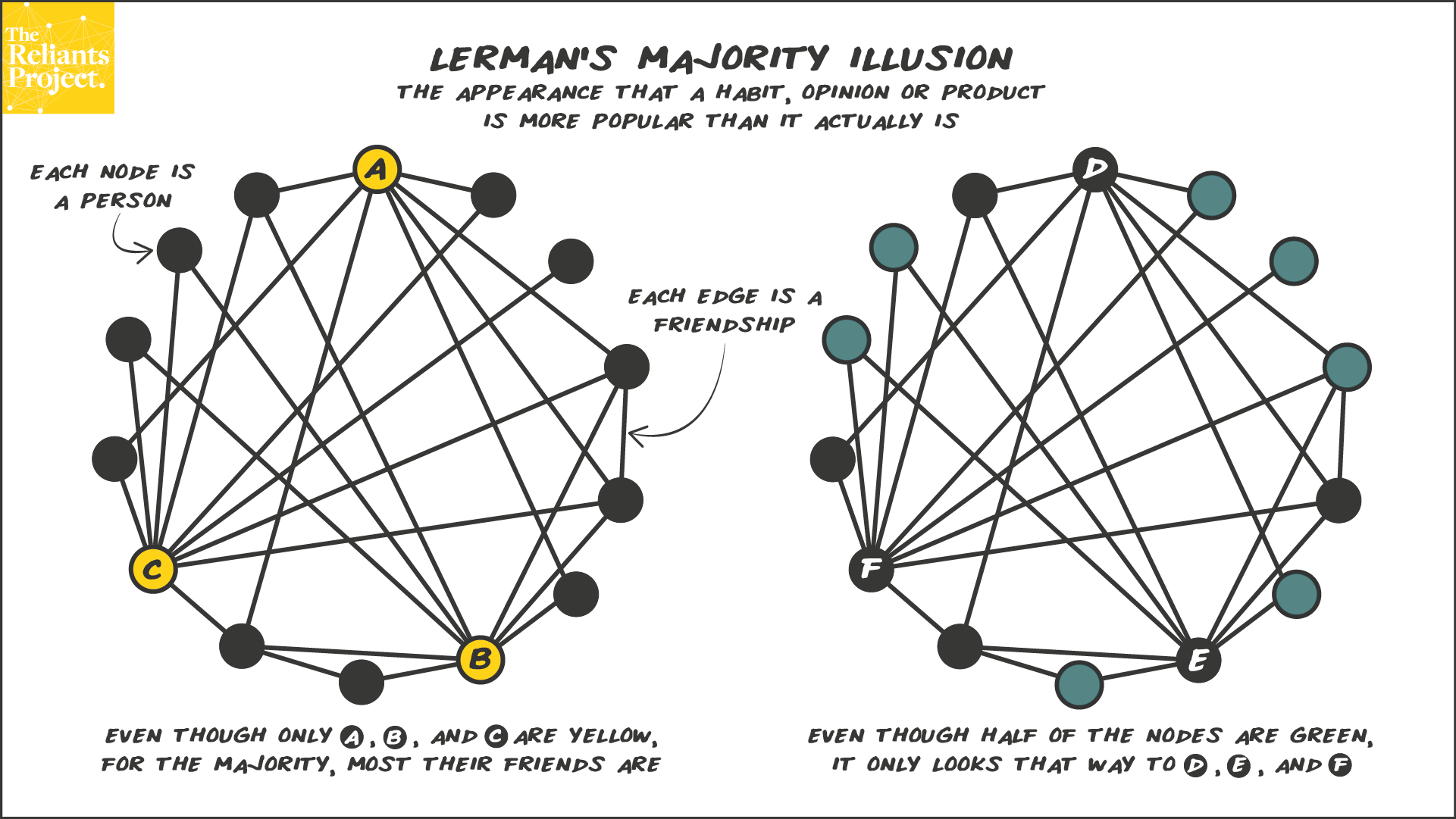This is the 11th post in a series. If you’re not familiar with how to read network graphs, you might prefer to start with Concept 1 or Concept 2.
This concept is directly related to the friendship paradox we just discussed in Concept 10. Lerman and her colleagues identified this phenomenon and studied it in several real-world networks. Since some people have many more connections or friends than others, they show up more frequently in friend groups. People can see a habit, opinion or even a product being used by most of their friends, even if it is not common overall.
In the left-hand example, let’s say that Alice (A), Bob (B) and Charlie (C) all own yellow t-shirts. All of their friends would believe most people own yellow t-shirts, because the majority of their friends happen to. In reality, only 3 people in the network actually own yellow t-shirts.
Similarly, we can look at it from the opposite perspective. Half of the people in the right-hand example have green t-shirts, but they’d never guess that the colour is so common. Only Dina (D), Eva (E) and Farouk (F) can see how common green t-shirts actually are in this network. The Washington Post created this clever quiz to explain how the illusion works.
Of course, the subject is not always so benign. Lerman and her collaborators found this illusion in political blog networks as well as groups of teenagers using drugs and alcohol. Any time you perceive a habit or opinion to be common, keep in mind that your perception might be distorted based on where you are in the network.

